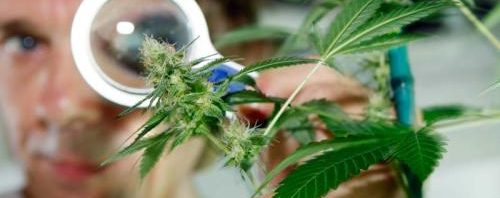The topic of marijuana has always been an interesting debate. Some say marijuana will only cause harm if it’s legalized. While others see the benefits of it, if it’s legalized.
The primary misconception of marijuana is that it is good or bad. This idea of categorizing marijuana into one of those two groups is outdated. By labeling marijuana as good or bad will only hinder its beneficial use in a medical setting.
Currently, marijuana is a Schedule I drug, meaning it has no currently accepted medical use and a high potential for abuse. While methamphetamine, a highly toxic drug where we can see the effects it has on the brain and body, is a Schedule II drug. This means meth has a high potential for abuse, but has some medical benefits.
Previous research on the Schedule I drug, marijuana, has shown it can help make a difference in patients with neurological diseases. In Alzheimer’s patients, marijuana has been seen to help slow down protein deposits in the brain. Marijuana can even reduce the unfavorable side effects of chemotherapy in cancer patients. While meth, a Schedule II drug, is rarely seen in the medical field anymore. The FDA lists the use of Desoxyn(meth) for ADHD and weight loss. In this day and age, there are better and safer options for treating ADHD like Adderall or Ritalin. Cigarettes cause about 480,000 deaths per year, causes 16 million people and counting to obtain some sort of disease and has no health benefits. Alcohol causes about 88,000 deaths per year, and alcoholism is a problem on its own. It’s just odd how all these substances are legal, and a drug like marijuana with known health benefits and close to zero deaths is classified as it is.
The science behind marijuana is how it affects endocannabinoid signaling in the brain is still not complete. Endocannabinoid is involved in a variety of processes, including appetite, mood and memory. The two most important receptors are CB1 and CB2, where CB1 is mostly in the brain and central nervous system, and CB2 receptors are at low levels in a healthy brain. The endocannabinoid system is interestingly connected to aging, neuroinflammation and neurodegeneration. Marijuana acts as a possible treatment for diseases to the endocannabinoid system.
Due to the drug classification of marijuana, even though there’s clear evidence of it being beneficial in the medical field. There’s not much research available for it due to the tough hurdles researchers need to go through to get access to a Schedule I drug. Without the necessary research, the public’s idea of marijuana will always be skewed. The public will always have its fear on legalizing marijuana, from having fears of what’s the next drug to be legalized if marijuana is legal and some see it as a gateway drug. There are other factors that cause people to use a harder drug like drug dealers giving samples of different drugs to marijuana buyers. The word marijuana, even carries a negative stigma to it. We know marijuana has some medical benefits, but by getting the necessary research for marijuana, this will resolve any stigma about the uncertainties of marijuana.
Unlocking Marijuana
